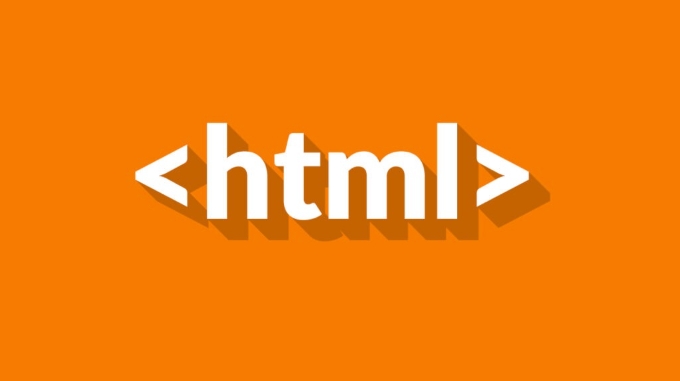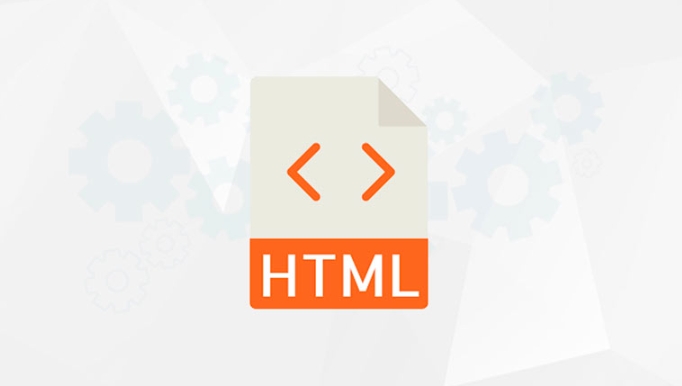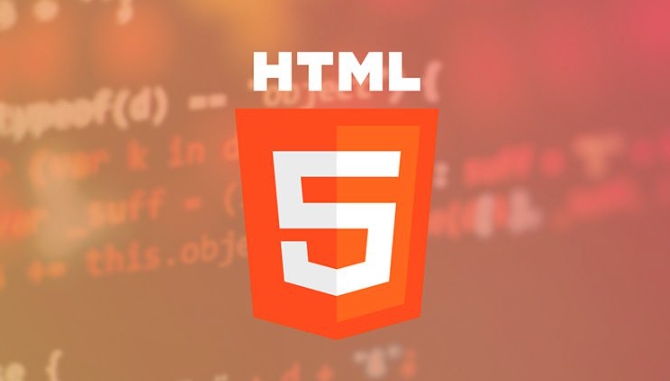Validating HTML Markup to Ensure Standards Compliance
Jul 16, 2025 am 03:55 AMVerifying HTML tags is important because it improves browser compatibility, SEO optimization, and post-maintenance efficiency. Common errors include labels that are not closed, attribute values are not quoted, nested errors, etc. They can be checked and fixed through W3C online tools, editor plug-ins, CI process checking and browser developer tools. The verification goal is to ensure that the code structure is reasonable rather than pursue full marks, and partial compromises can be accepted if necessary.

When writing HTML code, many people only focus on whether the page can be displayed, but have you ever wondered why some websites perform better on different devices? Why do search engines prefer certain web pages? One of the answers is whether your HTML meets the standards. Verifying HTML tags is a key step to ensure that it is compliant.

Why is it important to verify HTML?
Many people think that as long as the page can be displayed normally, there is no need to verify the HTML code. But in fact, an HTML document with clear structure and compliance with specifications has obvious advantages in browser compatibility, SEO optimization and post-maintenance.

For example, if a certain tag is closed, it may be fine in some browsers, but there may be misalignment or function abnormalities in other browsers. Moreover, "non-human users" like search engine crawlers have higher requirements for structure, and irregular code may be skipped or even misunderstood.
How to quickly verify HTML code?
Verifying HTML is not complicated, the most direct way is to use online tools, such as the Markup Validation Service officially provided by W3C. You just need to enter the web address, upload the file or paste the code directly, and it will help you check out all the places that do not meet the standards.

In addition to online tools, you can also:
- Use editor plugins in local development (such as HTMLHint for VS Code)
- Automatic verification tool in integrated CI process
- Use browser developer tools to see if the console has warnings
These methods can help you find problems early in development, rather than wait until they are released before being reported by users.
FAQs and Repair Suggestions
During the verification process, common errors include labels that are not closed, attribute values are not quoted, nested errors, etc. For example, the following code:
<p class=myClass>This is a paragraph of text</p>
The value of class here is not wrapped in quotes. Although most browsers can handle it, this is an irregular writing method. The correct way is to add double quotes:
<p class="myClass">This is a paragraph of text</p>
Other common questions include:
- Forgot to close the self-closing tag like
<img alt="Validating HTML Markup to Ensure Standards Compliance" >or<br>(although most of them can omit slashes now, it is best to maintain a consistent style) - Incorrectly nesting block-level elements and inline elements (such as putting
<div> in <code><span></span>) - Use deprecated tags (such as
<center></center>,<font></font>)
These problems may seem small, but if accumulated too much, it will affect the quality of the entire page.
No need to pursue 100% perfection
The goal of HTML verification is not to get "full scores", but to ensure that the overall structure of the code is reasonable and maintainable. Sometimes, because the code generated by the framework or CMS cannot completely avoid certain errors, you need to determine which "compromise" are acceptable.
For example, the code inserted by some third-party plug-ins may not be very standardized, but you cannot easily modify its output. At this time, you can choose to ignore specific parts instead of forcibly changing the score to cause abnormal functions.
In general, the issue of validating HTML tags is not complicated but easy to ignore. Once you develop a habit, you will find that the page becomes more stable and debugging is easier. Basically that's it.
The above is the detailed content of Validating HTML Markup to Ensure Standards Compliance. For more information, please follow other related articles on the PHP Chinese website!

Hot AI Tools

Undress AI Tool
Undress images for free

Undresser.AI Undress
AI-powered app for creating realistic nude photos

AI Clothes Remover
Online AI tool for removing clothes from photos.

Clothoff.io
AI clothes remover

Video Face Swap
Swap faces in any video effortlessly with our completely free AI face swap tool!

Hot Article

Hot Tools

Notepad++7.3.1
Easy-to-use and free code editor

SublimeText3 Chinese version
Chinese version, very easy to use

Zend Studio 13.0.1
Powerful PHP integrated development environment

Dreamweaver CS6
Visual web development tools

SublimeText3 Mac version
God-level code editing software (SublimeText3)

Hot Topics
 How to iterate over a Map in Java?
Jul 13, 2025 am 02:54 AM
How to iterate over a Map in Java?
Jul 13, 2025 am 02:54 AM
There are three common methods to traverse Map in Java: 1. Use entrySet to obtain keys and values at the same time, which is suitable for most scenarios; 2. Use keySet or values to traverse keys or values respectively; 3. Use Java8's forEach to simplify the code structure. entrySet returns a Set set containing all key-value pairs, and each loop gets the Map.Entry object, suitable for frequent access to keys and values; if only keys or values are required, you can call keySet() or values() respectively, or you can get the value through map.get(key) when traversing the keys; Java 8 can use forEach((key,value)->
 How to handle character encoding issues in Java?
Jul 13, 2025 am 02:46 AM
How to handle character encoding issues in Java?
Jul 13, 2025 am 02:46 AM
To deal with character encoding problems in Java, the key is to clearly specify the encoding used at each step. 1. Always specify encoding when reading and writing text, use InputStreamReader and OutputStreamWriter and pass in an explicit character set to avoid relying on system default encoding. 2. Make sure both ends are consistent when processing strings on the network boundary, set the correct Content-Type header and explicitly specify the encoding with the library. 3. Use String.getBytes() and newString(byte[]) with caution, and always manually specify StandardCharsets.UTF_8 to avoid data corruption caused by platform differences. In short, by
 Using std::chrono in C
Jul 15, 2025 am 01:30 AM
Using std::chrono in C
Jul 15, 2025 am 01:30 AM
std::chrono is used in C to process time, including obtaining the current time, measuring execution time, operation time point and duration, and formatting analysis time. 1. Use std::chrono::system_clock::now() to obtain the current time, which can be converted into a readable string, but the system clock may not be monotonous; 2. Use std::chrono::steady_clock to measure the execution time to ensure monotony, and convert it into milliseconds, seconds and other units through duration_cast; 3. Time point (time_point) and duration (duration) can be interoperable, but attention should be paid to unit compatibility and clock epoch (epoch)
 How does a HashMap work internally in Java?
Jul 15, 2025 am 03:10 AM
How does a HashMap work internally in Java?
Jul 15, 2025 am 03:10 AM
HashMap implements key-value pair storage through hash tables in Java, and its core lies in quickly positioning data locations. 1. First use the hashCode() method of the key to generate a hash value and convert it into an array index through bit operations; 2. Different objects may generate the same hash value, resulting in conflicts. At this time, the node is mounted in the form of a linked list. After JDK8, the linked list is too long (default length 8) and it will be converted to a red and black tree to improve efficiency; 3. When using a custom class as a key, the equals() and hashCode() methods must be rewritten; 4. HashMap dynamically expands capacity. When the number of elements exceeds the capacity and multiplies by the load factor (default 0.75), expand and rehash; 5. HashMap is not thread-safe, and Concu should be used in multithreaded
 JavaScript Data Types: Primitive vs Reference
Jul 13, 2025 am 02:43 AM
JavaScript Data Types: Primitive vs Reference
Jul 13, 2025 am 02:43 AM
JavaScript data types are divided into primitive types and reference types. Primitive types include string, number, boolean, null, undefined, and symbol. The values are immutable and copies are copied when assigning values, so they do not affect each other; reference types such as objects, arrays and functions store memory addresses, and variables pointing to the same object will affect each other. Typeof and instanceof can be used to determine types, but pay attention to the historical issues of typeofnull. Understanding these two types of differences can help write more stable and reliable code.
 What is the 'static' keyword in Java?
Jul 13, 2025 am 02:51 AM
What is the 'static' keyword in Java?
Jul 13, 2025 am 02:51 AM
InJava,thestatickeywordmeansamemberbelongstotheclassitself,nottoinstances.Staticvariablesaresharedacrossallinstancesandaccessedwithoutobjectcreation,usefulforglobaltrackingorconstants.Staticmethodsoperateattheclasslevel,cannotaccessnon-staticmembers,
 Top Java interview questions
Jul 14, 2025 am 01:59 AM
Top Java interview questions
Jul 14, 2025 am 01:59 AM
High-frequency questions in Java interviews are mainly focused on basic syntax, object-oriented, multithreaded, JVM and collection frameworks. The most common questions include: 1. There are 8 basic Java data types, such as byte, short, int, long, float, double, char and boolean. It is necessary to note that String is not the basic data type; 2. Final is used to modify classes, methods or variables to represent immutable, and finally is used to ensure code execution in exception processing. Finalize is an Object class method for cleaning before garbage collection; 3. Multi-thread synchronization can be achieved through synchronized keywords, ReentrantLock, and vo.
 PHP prepared statement get result
Jul 14, 2025 am 02:12 AM
PHP prepared statement get result
Jul 14, 2025 am 02:12 AM
The method of using preprocessing statements to obtain database query results in PHP varies from extension. 1. When using mysqli, you can obtain the associative array through get_result() and fetch_assoc(), which is suitable for modern environments; 2. You can also use bind_result() to bind variables, which is suitable for situations where there are few fields and fixed structures, and it is good compatibility but there are many fields when there are many fields; 3. When using PDO, you can obtain the associative array through fetch (PDO::FETCH_ASSOC), or use fetchAll() to obtain all data at once, so the interface is unified and the error handling is clearer; in addition, you need to pay attention to parameter type matching, execution of execute(), timely release of resources and enable error reports.






